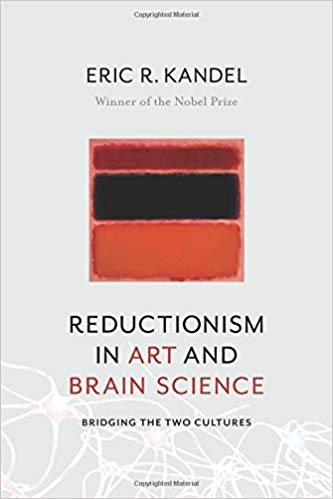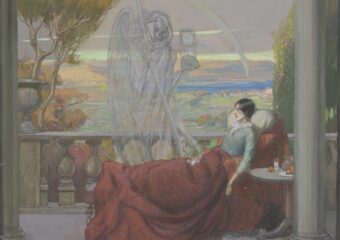Eric Kandel
Columbia University Press
New York
2016
226 pages
According to the Art:
Kandel’s aim in this book is more than just explaining how reductionism is used in brain science and in modern art. He is also out to show in a larger sense how science and the arts, which now exist as “two cultures,” are more alike than not.
Synopsis:
Eric Kandel, the 2000 Nobel Prize winner in Physiology or Medicine, has an abiding interest in art for its own sake, and also in how art can inform his primary work in brain science, especially as both art and science can be understood through reductionism.
My central premise is that although the reductionist approaches of scientists and artists are not identical in their aims—scientists use reductionism to solve the complex problem and artists use it to elicit a new perceptual and emotional response in the beholder—they are analogous .
p. 6
Kandel’s aim, however, is more than just explaining how reductionism is used in brain science and in modern art. He is also out to show in a larger sense how science and the arts, which now exist as “two cultures,” are more alike than not.
My purpose in this book is to highlight one way of closing the chasm by focusing on a common point at which the two cultures can meet and influence each other—in modern brain science and in modern art. Both brain science and abstract art address, in direct and compelling fashion, questions and goals that are central to humanistic thought. In this pursuit they share, to a surprising degree, common methodologies.
p. 3
This slim volume comprises four parts amply supplied with schematics of brain structures and nerve tracts, and with reproductions of modern art works. The two middle parts are concerned with how reductionism applies to brain science and to art, respectively. The introduction places the topic within the context of the two-culture divide. The final part argues that art reduced to a set of core elements (e.g., form, line, color, and light) can add to the understanding of how the brain works, just as brain science reduced to a set of core elements (e.g., top down and bottom up processing of images) can add to the understanding of how art can be perceived and used to evoke certain responses.
Bottom up processing refers to “universal rules that are largely built into the brain at birth by biological evolution and enable us to extract key elements of images in the physical world, such as contours, intersections, and the crossings of lines and junctions.” (p. 22) This inborn circuitry is all that is needed for perceiving figurative art, and as a result produces uniform perceptions among viewers. Top down processing refers to the information the brain needs to perceive images when bottom up processing is insufficient, like in the case of abstract painting. It “incorporates the information our brain receives from the external world with knowledge based on learning from earlier experiences and hypotheses testing.” This includes “people we have seen and known, environments we have been in, as well as memories of other works of art we have encountered.” (p. 23) Top down processing thus brings the viewer into the creative process and results in differences in perceptions among individuals of a particular work of art.
In Kandel’s and many others’ telling, modern art was the response to the advent and expanding use of photography. No longer was figurative painting needed to render life as it is. Artists became free to explore and experiment with other ways to generate perceptions of life. Starting with impressionism and progressing through abstract expressionism and pop art, Kandel describes how painters in particular reduced their art to form, line, color, and light. They invited—demanded—that viewers participate in creating what they perceive. Brain science was able to use these elements also to map places in the brain where this processing takes place and to associate these elements with the different responses they produce. To illustrate these concepts, Kandel features the works of Turner, Monet, Kandinsky, Mondrian, de Kooning, Pollock, Rothko, Morris, and Warhol among others.
In the end, Kandel is asserting—hoping—that reductionism in art will serve brain science because it will show “how we process unconscious and conscious perception, emotion, and empathy.” (p. 188) And, that reductionism in brain science will help artists “enhance traditional introspection with the knowledge of how some aspects of our mind work.” (p. 189)
Analysis:
Kandel’s earlier book, The Age of Insight: The Quest to Understand the Unconscious in Art, Mind, and Brain (Random House 2012), is a sweeping analysis of the connections between brain science and art. In this more recent effort, he elaborates on just how reductionism works to connect brain science and art.
While in this book Kandel expands on the connections between science and art at the biologic level, he adds to the bigger project of reconnecting science and art at the cultural and societal levels. He opens the book recounting C.P. Snow’s famous lament at the 1959 Annual Rede Lecture (Cambridge University) about the two cultures of the sciences and the arts, and how this event started efforts to reconcile the two. Snow, who was a chemist and author of fiction novels, described the basic divide as:
Literary intellectuals at one pole—at the other scientists, and as the most representative, the physical scientists. Between the two a gulf of mutual incomprehension…but most of all lack of understanding. They have a curious distorted image of each other. Their attitudes are so different that, even in the level of emotion, they can’t find much common ground.
Snow was not the first to call for a reconciliation between science and the arts. Goethe, in the early 1800s, said that “science arose from poetry…when times change the two can meet again on a higher level as friends.” Goethe would not see any such meeting during his lifetime. He would instead see intensification of the divide as “science” became a distinct discipline and the term “scientist” entered the vernacular between 1830 and 1840. Snow was hoping his Rede lecture would lead to the creation of a “third culture” made up of people from fields such as sociology, social history, political science, psychology, economics, and government, among other disciplines, who could create communication links between science and the arts. His hopes did not materialize in anything definitive, but his call generated subsequent efforts to argue that science and the arts are both creative enterprises seeking truth.
Jacob Bronowski took on the challenge in his 1965 book, Science and Human Values (Haper & Row). To him, the work of scientists and artists is the same because both are engaged in acts of creation: “This act is the same in Leonardo, in Keats, and in Einstein.” (p. 16)
E.O. Wilson offered the concept of “consilience” to reconcile the two cultures in a 1998 book named for that idea (Knopf). He makes clear that consilience is not a conflation of science and the arts—indeed they should remain as separate entities—but instead, it calls for science being fed insights from the arts and the arts being fed substrate from the discoveries of science.
Jonah Lehrer (see Also section below), in his 2007 book, Proust Was a Neuroscientist (Houghton Mifflin), connects with Wilson when he says, “science needs art to frame the mystery, but art needs science so that not everything is a mystery.” (p. xii) But he is not satisfied with the basis of third culture proposals that merely constitute the recognition that science and the arts completes the other. He proposes a “fourth culture” that is a more of a blurring of the two than a link between them.
It will freely transplant knowledge between the sciences and the humanities, and will focus on connecting the reductionist fact to our actual experience. It will take a pragmatic view of the truth, and it will judge truth not by its origins but in terms of its usefulness. What does this novel or experiment or poem or protein teach us about ourselves? How does it help us to understand who we are?
p. 196
Others have weighed in on bridging the two cultures as well, if not necessarily putting their arguments in that specific context. Kandel refers additionally to Brockman, Ramachandran, and Shlain in particular.
Medical Humanities could be viewed as having germinated from the seeds these thinkers planted with the aim of connecting the sciences and the arts together through jointly exploring health, illness, and health care. Courses in medical humanities at both the undergraduate and graduate level, academic departments, advanced degree programs, journals, blogs, and databases are yet more signs of a growing appreciation for the common links between science and the arts. Kandel and others could take the evolution and application of medical humanities as signs that their efforts and ideas have not gone for naught.
Nevertheless, the chasm between science and the arts has been narrowed, but not closed. Goethe’s aspiration maintains its active status.
Also:
Lehrer worked in Eric Kandel’s laboratory while he was an undergraduate student at Columbia University in New York. His interest in the connection between the arts and science, especially neuroscience was awakened from this experience. After publishing Proust Was a Neuroscientist, Lehrer went on to write two other books (How We Decide, Imagine) and several articles in prominent magazines including The New Yorker and Wired. Analyses of these publications showed that he had used some of his previous published work without acknowledging that he had done so, and that he had fabricated other content, including interviews. Lehrer subsequently admitted these misdeeds, which resulted in the publisher of the two books (Houghton Mifflin Harcourt) to withdraw them from print, and publishers of his articles to either withdraw them or to attach notations. However, no such problems have been found with his first book, which remains in print and why I chose to draw from it for this review.
A version of this review is posted at the NYU Literature, Arts & Medicine Database.



